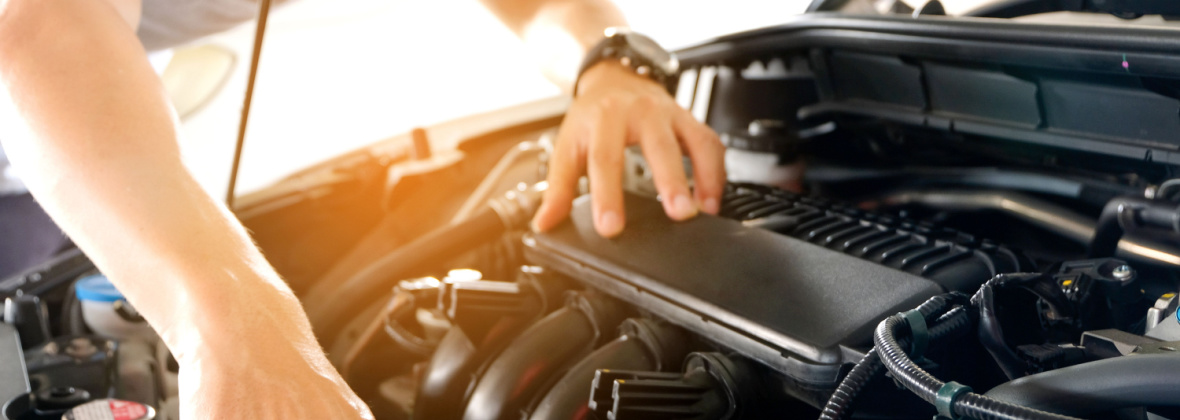Schedule A Coolant Flush: Protect Your Engine With TIRECRAFT Auto Care
March 22, 2023
Tires

Coolant, also known as antifreeze, is an all-important heat transfer fluid designed to keep your engine from overheating and rusting. But it doesn’t last forever—in order to keep your cooling system in shape, you will need to invest in the occasional coolant flush.
So when should we book this maintenance service, and how do we avoid overpaying?
That’s what today’s post is all about. Read on to learn the basics and benefits, as well as the recommended service schedule for internal combustion engine (ICE) vehicles, or contact your local TIRECRAFT to get a free quote on any auto care service straight away.
What Is A Coolant Flush? Service Basics And Benefits
In a standard internal combustion engine (ICE) vehicle, coolant keeps your engine at the appropriate operating temperature by recovering and redistributing heat. This occurs via a series of pipes, which pump coolant around your engine, then channel it back to the radiator, where a fan cools down the high-temperature liquid. A similar technique is used to cool some electric vehicle (EV) batteries, through a process known as “indirect cooling.”
Like engine oil, coolant fluid deteriorates and accumulates contaminants in the form of rust and other debris over time, making it less effective at controlling engine temperatures. When this happens, your engine is more prone to overheating, which may lead to serious component damage or sudden system failure, potentially costing you thousands of dollars in repairs and even putting your life at risk.
Fortunately, these risks are easily avoided by investing in the occasional coolant flush, which is exactly what it sounds like: flushing the dirt, rust, and sludge out of your cooling system, then, once it’s all cleaned out, adding new coolant fluid.
Beyond refreshing your fluids and keeping your engine cool, some additional benefits of this service include:
- Removal of rust and scale deposits in your engine
- Lubrication of your automobile’s water pump, which can extend its service life
- Addition of anti-rusting additives to prevent future rust build-up
- Complete engine/cooling system inspections with every coolant flush, increasing your odds of detecting minor problems before they spiral into major expenses
Over the long term, this affordable maintenance service can greatly improve vehicle performance and fuel efficiency, reduce repair costs, increase resale value, and keep you safe on the road.
How Often Do I Need To Schedule A Coolant Flush?
Good news: this service typically only costs $100-200 and is not required annually.
Some auto experts recommend a full coolant flush and replacement every 3 to 5 years; others suggest once every 160,000km. To further complicate matters, these recommendations will vary depending on your unique vehicle, driving demands, type of coolant fluid, and climate. For example, green coolant fluids are notoriously short lived, typically lasting for about 3 years, whereas orange coolant fluids typically double this estimated service life.
With that in mind, for best results, you should contact your local TIRECRAFT for a personalized service recommendation and free coolant inspection.
If you drive an electric vehicle, your car may use coolant to keep battery temperatures under control, although this is not true of all makes and models. Some EVs, like the Nissan Leaf, use air cooling. But even if they do use coolant, most makes and models will not require coolant changes during the vehicle’s lifetime.
Best Practices For Better Coolant Flushes: TIRECRAFT Tips
1. Always use the manufacturer-recommended coolant for your vehicle—Using the wrong engine coolant can put your vehicle at risk of corrosion and overheating, and it can also damage the water pump, radiator, radiator hoses, and cylinder gasket. Check your owner’s manual or contact your local TIRECRAFT for coolant recommendations.
2. Always follow the manufacturer’s coolant flush recommendations—Even if you drive less frequently than the average person, it is recommended that you follow all manufacturer’s recommendations, both to preserve your vehicle’s factory-fresh performance and to keep your warranty coverage intact.
3. Do not mix water into coolant—Although coolant is made from a combination of ethylene or propylene glycol and water, adding extra water is a major mistake. Upsetting the careful fluid ratios puts your engine at serious risk of overheating, freezing in winter, or contamination from impurities. If your coolant levels are low or your engine is showing signs of overheating, contact your local TIRECRAFT.
4. Do not add coolant to electric vehicles (EVs)—Some EVs use coolant, but manufacturers warn owners against top-ups. If you get a touchscreen indicator that the fluid level is low, contact your local TIRECRAFT straight away, and do not attempt to remove the filler cap on your own.
Get A Free Quote On A Coolant Flush: Contact TIRECRAFT
To get a free inspection and estimate on a coolant flush for your vehicle, contact your local TIRECRAFT. We work with all vehicles, carry a wide range of manufacturer-approved coolant fluids, and give our clients more ways to save with competitive pricing, customer rewards, and exclusive shop promotions.
Back

